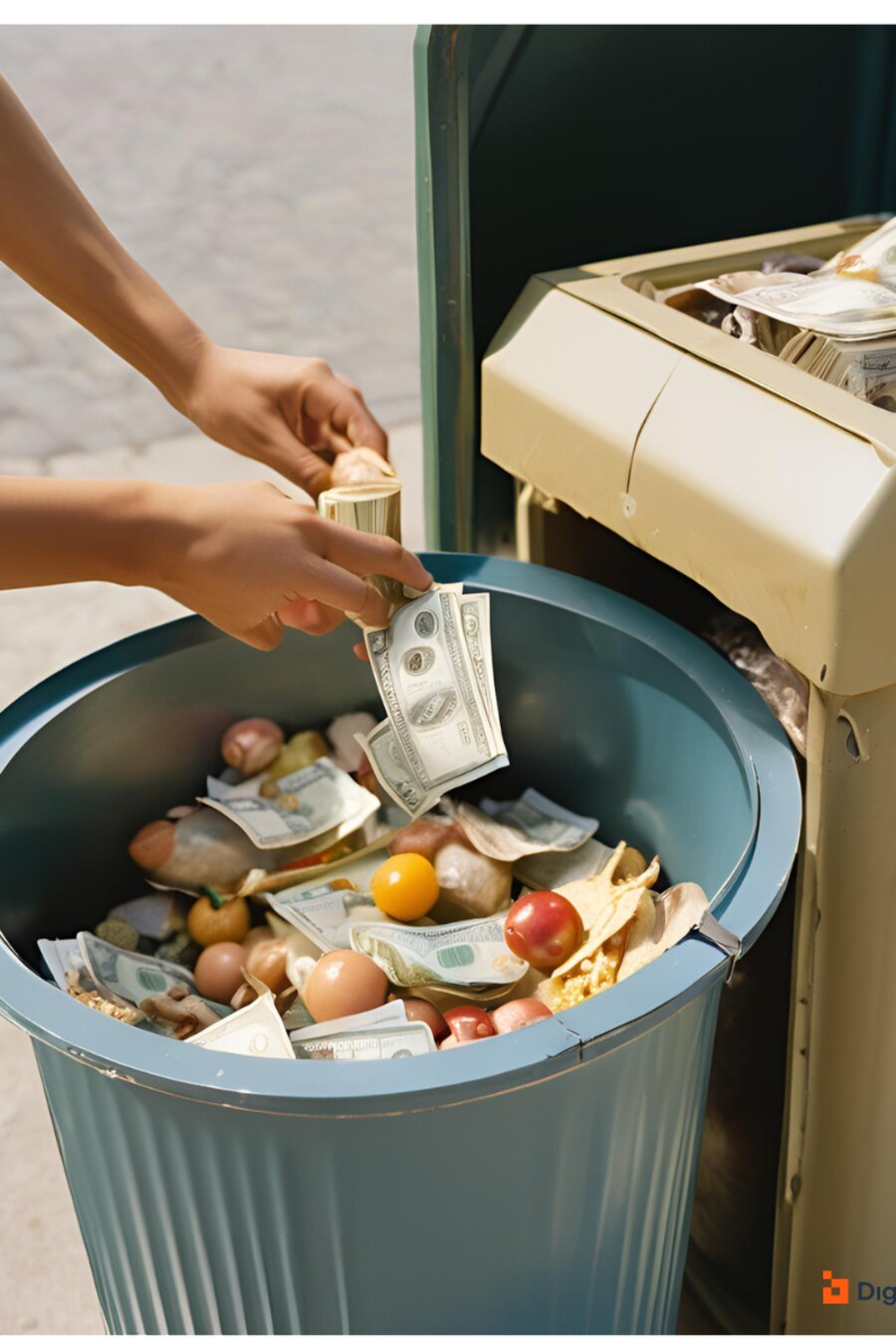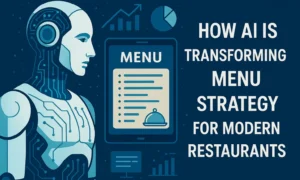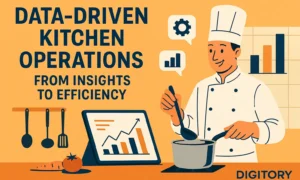
How Restaurants, Bars, and Breweries Can Slash Wastage and Unlock Growth Margins in 2025
The Hook: Wastage Isn’t Just a Cost—It’s Your Biggest Growth Opportunity
In 2025, the food and beverage industry isn’t just battling labor shortages and inflation—it’s fighting against the silent killer of profitability: operational wastage. Whether you run a restaurant, bar, or brewery, every ounce of unused inventory, every overpoured drink, and every spoiled ingredient is cutting into your margins.
The good news? Smart operators across India are turning this challenge into a growth engine. By reducing waste, they’re not just protecting their profits—they’re unlocking scalable, sustainable expansion. In this blog, we uncover the strategies, technologies, and cultural shifts that are helping restaurants, bars, and breweries slash wastage by up to 30% and grow faster in 2025.

The 2025 Landscape: Shrinking Margins, Rising Expectations
- Food & Labor Cost Inflation
According to FSR Magazine and QSR, food and labor costs have reached all-time highs in 2025. Operators must now rethink how to optimize without cutting quality.
- Sustainability as a Consumer Priority
Backslash 2025 Edges reveals that consumers are actively choosing eco-conscious brands. Reducing waste isn’t just good for business—it’s now a brand differentiator.
- New Revenue Models Demand Precision
- Subscription dining
- D2C cocktails
- On-demand table reservations
All require leaner, smarter inventory and operations.
The Hidden Costs of Wastage in F&B
- Food Waste
- Overproduction
- Spoilage
- Inconsistent portions
India loses 67 million tonnes of food annually (FSSAI), much of it from hospitality operations.
- Beverage Waste
- Overpouring
- Spillage
- Recipe variance
Bars and breweries lose 20-25% of profits due to unmanaged pours.
- Labor Inefficiency
- Idle time
- Redundant tasks
- Training turnover
Wastage isn’t just product-related. Human resource mismanagement is equally costly.
- Utility and Equipment Losses
- Energy overuse
- Refrigeration inefficiencies
- Equipment breakdowns from misuse
Proven Strategies to Slash Wastage in 2025
- Real-time stock tracking
- Automated reorder points
- Expiry-based FIFO rotation
- Recipe Standardization
- Use kitchen display systems (KDS)
- Train staff on grams, not guesses
- Integrate POS for auto-scaling recipes
- Digital Pour Control (Bars & Breweries)
- Flow meter sensors
- POS integration with pouring hardware
- Pour-per-order calibration
- Predictive Prep Scheduling
- AI-driven forecasting for rush periods
- Reduce spoilage and idle prep
- Link with POS to adjust for real-time order volumes
- Centralized Production (for Chains)
- Batch-prep at central kitchens
- Distribute to outlets with tracked units
- Lower per-outlet wastage
- Cross-Training Staff
- Reduces idle time
- Increases flexibility across service and kitchen
- Minimizes downtime costs
Tech-Driven Tools That Reduce Waste
- Integrated POS Systems (Digitory)
Digitory helps reduce waste by:
- Tracking real-time ingredient usage
- Mapping variance between theoretical vs. actual usage
- Setting alerts for overuse, underuse, or dead stock
- IoT Kitchen Equipment
- Smart refrigerators with temperature logs
- Connected ovens for portion precision
- Equipment health alerts
- Smart Scheduling Software
- Prevents overstaffing
- Balances front and back-of-house roles
- Matches labor to forecasted footfall
- QR & Digital Menus
- Update items based on stock
- Promote high-margin, low-waste items
- Reduce printed menu obsolescence
- Inventory Cameras & AI Vision
- Automate stock counts
- Identify spoilage visually
- Prevent internal shrinkage
Real-World Use Cases
- Fast-Casual Restaurants
- Use AI forecasting tools to prep only what’s needed
- Integrated kitchen and POS systems track wastage live
- Result: 22% reduction in weekly food waste
- Craft Breweries
- Digitally track batch yields and wastage
- Analyze seasonal trends for SKU production
- Result: 17% increase in profit margin per keg
- Premium Bars in Metro Cities
- Install digital pour tracking
- Use POS to flag suspicious variance
- Result: ₹3-5 lakh monthly savings on liquor
- Multi-Outlet QSR Chains
- Central kitchens do bulk, batch-controlled prep
- Live stock reporting across outlets
- Result: Consistency + 30% reduction in food loss
The Culture Shift: Making Waste Reduction a Team Sport
- Align KPIs Across Teams
- Wastage should be everyone’s goal—not just kitchen’s
- Track performance per shift, per station
- Incentivize Savings
- Bonuses for low-waste weeks
- Recognition for inventory accuracy
- Train & Retrain
- Waste awareness training
- Recipe audits
- Portion size recalibration every quarter
- Transparency = Accountability
- Dashboards showing daily waste
- Weekly reviews with operations team
Compliance, Sustainability & Brand Image
- FSSAI, ESG, and Local Regulations
- Track disposal methods
- Digitory can log waste compliance audits
- Marketing Sustainability
- Show waste reduction stats on social media
- Build trust with conscious consumers
- Loyalty Programs Around Sustainability
- Reward customers for zero-waste dining
- Offer bonuses for digital-only ordering or BYO containers
Final Thoughts: Waste Is the New Revenue
In 2025, the restaurants, bars, and breweries that thrive will not be those who sell the most—but those who waste the least. Smart systems, sharp staff, and synchronized operations are the keys to unlocking new margin growth.
How Digitory Helps Slash Waste and Maximize Growth
Digitory’s POS platform is designed not just to manage your restaurant, but to optimize it for profit. Here’s how:
✅ Ingredient-Level Inventory Management
- Real-time depletion
- Waste alerts
- Expiry-based forecasting
✅ Recipe-Costing Integration
- Tracks actual vs. planned consumption
- Flags margin leaks
✅ Labor & Shift Optimization
- Aligns staffing with footfall
- Prevents overstaffing and idle payroll
✅ Multichannel Visibility
- See waste trends across outlets
- Drill down into shift-wise, item-wise reports
✅ Mobile & Dashboard Access
- Owners get alerts for red flags
- Managers can take action immediately
Wastage is no longer inevitable. It’s a metric you can control—and one you can monetize. Let Digitory help you cut costs, grow smarter, and win big in 2025.
Wastage isn’t just costing you today — it’s costing you tomorrow’s expansion. Book a free consultation with expert of Digitory and protect your future profits today!
Frequently Asked Questions (FAQs)
How much wastage is considered acceptable in restaurants?
Ideally less than 5%. Many Indian F&B outlets face 10–20% wastage due to poor inventory control and pilferage.
What is the financial impact of just 1% wastage?
For a ₹5 Cr outlet with 10% EBITDA, just 1% wastage can wipe out ₹5 lakh — almost 10% of total profit.
Can I track food and liquor wastage in real time?
Yes. Solutions like Digitory offer real-time tracking with alerts on over-pours, spoilage, and recipe deviations.
How does Digitory help reduce restaurant wastage?
Digitory uses live inventory tracking, recipe-level costing, and predictive ordering to reduce food & liquor losses by 5–10%.
Does reducing wastage really boost business growth?
Absolutely. Every ₹1 saved on wastage adds to EBITDA — which strengthens fundraising, expansion, and valuation.



